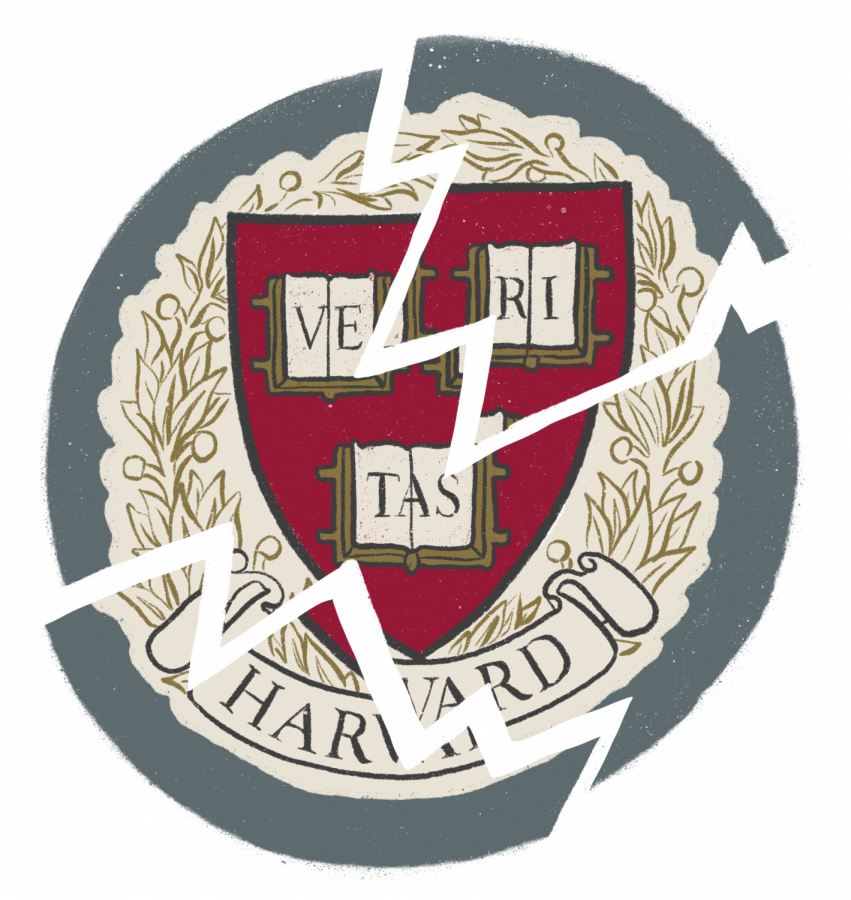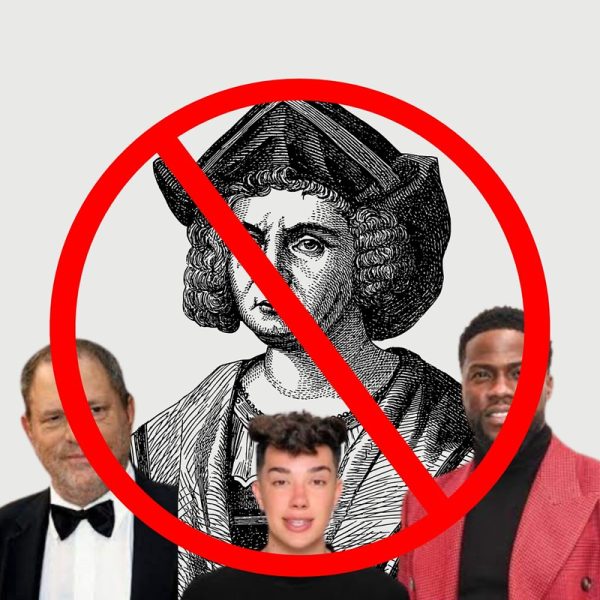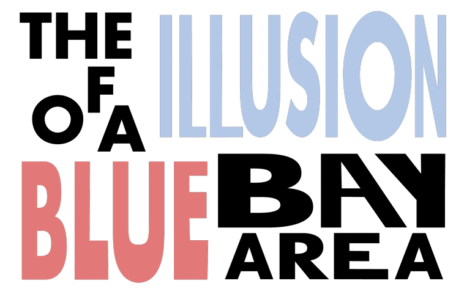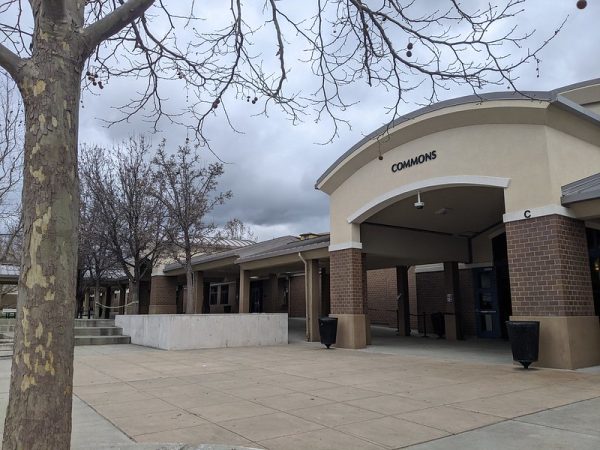The college admissions scandal can’t change anything
All the wrong questions
When the news of the massive college admissions scandal was unveiled by the Department of Justice, people were shocked. Collectively, many believed that esteemed educational institutions could never be corrupted to allow rich kids to get in without qualifications. Others simply believed this had always happened, just that the acts of bribery were under the table , but legal. After all, it is legal to endow a professorship, rub some elbows and get powerful friends in high places to write a recommendation letter.
“We’re not talking about donating a building so that a school is more likely to take your son or daughter,” Andrew Lelling, the U.S. attorney for the District of Massachusetts, said. “We’re talking about deception and fraud.” In this way, he separated the illegal and legal distinctions between cheating to get your kid into college. It’s an arbitrary line drawn by more powerful elites– after all, what’s the tangible difference between the socioeconomic benefits, the admissions counselors, and this? Yes, some rely on student merit, but the conclusion of both is that poor students don’t deserve to be at elite institutions.
Ethan, a freshman and legacy student, echoed the sentiment to VICE News, saying, “I think there is a moral difference between perhaps donations versus bribery… The school benefits and for other kids tuition. It might pay for new programs or something that can benefit people. Bribery doesn’t go to the school.”
During the fallout, commentators took this opportunity to delve into several problems with the college admissions process: mass student stress, it disenfranchisement of poor and colored students and that college sports admissions were fundamentally “white affirmative action,” as the Atlantic noted.
But, I digress. Instead, we should ask ourselves why it is okay to isolate an elite education to the limited occupancy space of a classroom. This is not about the quality of education, but the power of the name on the degree.
Few questioned the underpinnings behind the scandal: why do we allow colleges to hold so much institutional power and exclude people as they wish?
We all know the admissions process is irredeemably flawed. Not only does the current system of merit hurt poor students, but it is also based on a 20th-century effort to exclude Jewish people from higher learning. There are legacy admissions, as one-third of Harvard’s class is a legacy admit, and other unfair intangible characteristics. But, I digress. Instead, we should ask ourselves why it is okay to isolate an elite education to the limited occupancy space of a classroom. This is not about the quality of education, but the power of the name on the degree.
The school you to go to rarely affects the skills that you obtain or your technical employability. In fact, studies find that (controlling for education and intelligence), if you are on par with elite college students in terms of intelligence and other skills before college, where you go to college doesn’t determine your future earnings or success. Yet, a 1999 study in The Journal of Human Resources found the better the school, the higher the paycheck. The different conclusions in the different studies can only be explained by the brand, or appeal, of the school. After all, elite schools don’t just offer a degree, they offer institutional power.
We adhere to “rankings” of college based on the name value of a brand– derived from metrics rooted in institutional power. Thus even though Americans are getting more educated, the value of a college degree becomes constrained to name-brand schools, effectively creating a barrier that only class can circumvent, while the university allows a few token “hires.” Not to mention, rankings are usually determined by graduates earnings, which, as mentioned above, are also flawed. In 1975, U.S. News published its ranking where Harvard, Princeton and Yale all did not crack the top three. So, U.S. News fired its statistician, rewrote their formula, and published new rankings, according to Conrad Hackett of the Pew Research Center. Since then, Harvard, Princeton or Yale have always topped the list.
We need to question why we allow degrees to have this power before we can conceptualize how to fix college admissions. In the status quo, elite schools are playgrounds for the rich, who will ultimately be running the world, in an isolated system impermeable to minority students and poor students.
Institutional power
Elite schools have so much institutional power, yet their age guarantees that they will be marred by scandals of the past– racist monuments and the like. But, I argue, besides historicity, elite universities cannot help but be classist and racist.
Harvard has a famous stained glass window collection, bragging the second largest collection to secular stained glass in the world– though later, a friend told me Yale boasts that same title, and I guess the distinction matters to some people. It looks like a church, but I cannot seem to imagine what it’d be worshipping. The windows honor great literary figures, like Shakespeare, Dante and other people of comparable merit. Christopher Columbus is memorialized as well. Amongst the parishioners of arts and science and Columbus, it’s painfully ironic to think what could be admired when they look at Columbus immortalized in glass. This building was built to honor Union soldiers, yet we don’t want to talk about the rest of Columbus’ deeds, like native genocide and the clearing of a land and the extermination of a culture. The windows make the sunlight more beautiful as they sanitize native violence; it’s almost if Harvard, robbed in old wisdom and permanence, existed before the Native Americans themselves.
Columbia University is named after Columbus: someone responsible for mass genocide. It’s comparable to the outrage over Confederate statues — why are we honoring the worst atrocities and not repairing this wrongdoings? For example, it took three years for the Board of Trustees to approve a single plaque outside John Jay Hall honoring the Lenape. In Manhattan, the Lenape word for “Land of many hills,” the administration for years opposed a single plaque.
But symbols manifest into policy. Indigenous communities are often too poor to visit colleges or apply, and are often alienated if they manage to get in. Columbia’s Native American Council asked the administration to create “fly-in” programs, opportunities to visits schools and learn about higher education, in addition to having Native Adviser—demands that have gone unanswered by the Board of Trustees. For comparison, The Columbia Spector wrote that “the Berick Center for Student Advising, which serves Columbia College and engineering students, has been criticized by both students of color and white students as inadequate,” leading minority faculty to be forced to take on unofficial advisor roles for students of color.
At Yale, a few years ago, it was big news when the university finally capitulated and changed the name of Calhoun House, named after a Slave Holding vice president, previously known as the vice president of the United State of America who happened to own people, as a footnote, rather than a stain on his life, with the brutal crimes being asterisked away. The burden of activism is never placed on the universities themselves.
I can’t get over how much power the institution has. A friend of mine recently joked that Harvard’s endowment was probably larger than the GDP of some small countries; and yes, Harvard’s $36.4 billion ranks higher than the bottom 113 countries.
Earlier this year, I went to an information session for Princeton University at Dougherty. The presentations have such an ironic format, with admissions and aid squeezed at the end, and the rest feeling like an advertisement; an unneeded advertisement for an already captivated audience that was captive before they walked in. But in the midst of the last 15 minutes, the presenter touted financial aid, and noted, with Princeton’s endowment, if they “had” to, they could afford to put every single student on a full scholarship. “So why don’t you?” I wondered, but I couldn’t say it because no one else is thinking it. Few in that DVHS room probably spared a thought about financial aid, but this faux pas allowed me to revel in the absurdity of it all.
Affirmative action and the Supreme Court
Harvard University has long been lauded as the pinnacle of these elite universities. Amid the allure of the university, a lawsuit alleging systemic discrimination of Asian Americans in the admissions process is in the background. The “H” brand wants nothing to do with ugly words like discrimination or prejudice. In the lawsuit, Harvard noted that if there was any discrimination, it occurred in lower personality rankings from the teachers and counselors who write letters of recommendation; it’s certainly true that any bias didn’t start or end with Harvard, but they’re complacent with it the same way they’re okay with Yale’s slavery building or the windows displaying Christopher Columbus. To be clear, let’s not conflate affirmative action and discrimination and allow the majority to co-opt the struggles of one group to another. It’s more of the “model minority myth”: the idea that Asians are a minority group capable of succeeding despite racism and a monolithic force. The conflation dies when you find out that the main beneficiaries of affirmative action are white women.
The lawsuit doesn’t seem to be going anywhere as of now, but there’s always the possibility that a judge will rule in someone’s favor and the appeals will go on and perhaps reach the Supreme Court where a rigged majority will rule one way or another. Regardless, it won’t change the Harvard stained glass windows, and it certainly won’t change the admissions process.
The lawsuit is almost certainly being co-opted by white people. Most notably, the plaintiff’s lead lawyer, Edward Blum, is the same one who challenged affirmative action in Fisher v. University of Texas, where plaintiff Abigail Fisher was allegedly denied acceptance to a UT school because she was white. The lawsuit failed because of Justice Anthony Kennedy, who recently retired and was replaced by Brett Kavanaugh. Kennedy was a centrist and the “swing vote,” meaning he would from time to time vote with the liberals, breaking the 5-4 conservative block, as he did in Fisher. But Justice Samuel Alito, who is still on the court, put a nice little tidbit in his opinion, saying that there was potential for a successful lawsuit against affirmative action if Asians were the plaintiffs:
“[The Court] completely [ignores] its [own] finding that Hispanics are better represented than Asian-Americans in UT classrooms,” Alito wrote. “In fact, they act almost as if Asian-American students do not exist,” before going on to mention Asian-American discrimination 51 times.
And that’s how we got to where we are. Perhaps it’s fitting that Kennedy’s last opinion was upholding a white supremacist travel ban, as a centrist, of course, so he couldn’t forget to put a little note condemning Korematsu v. United States, which allowed the internment of Japanese Americans during World War II.
During Kavanaugh’s confirmation hearings, which were taking place to replace Justice Kennedy, affirmative action’s apparent last centrist defender, elite university credentials, were used as almost as a shield. The Atlantic’s Joe Pinsker noted that Kavanaugh used his alma mater (“I went to Yale”) as a faux answer, to sneer at the accusations and insinuate, “Well, how could I do something wrong, I went to Yale.” And it was accepted. Every single Justice of the Supreme Court went to Harvard or Yale Law School and when Kavanagh was announced as Trump’s nominee, Yale sent out a boastful announcement basically saying now we’re winning the SCOTUS and stained glass windows competition, while ignoring the fact that his rulings were abhorrent. At the time the public didn’t know of the assault allegations, but his judicial record showed hostility to Roe v. Wade, immigrants, civil rights, the environment and more.
In 1935, JFK wrote in his college application to Harvard about the “enviable distinction” it was to be a “Harvard man,” like his father. Of course, he wrote nearly the exact same essay at Princeton but that didn’t matter and now we’re applying to the Harvard-Kennedy school. The system is a narrow funnel, acting like mobility and acceptance to these colleges is a possible reality. And for some it is, but to most the “enviable distinction” remains out of reach.
In the Harvard case, The New Yorker reported on the disparities in “Sparse County,” a collection of 20 rural, typically underrepresented states at elite colleges. There, it takes a 1310 SAT score for a white student to receive a Harvard pamphlet, but a score of 1380 for an Asian student. These pamphlets are by no means correlated to admission, but it shows who the college wants to attract. They are not the “holistic” review Harvard boosts, and nor should it be, but it provides a window into what exactly makes a “Harvard man.” Simply put, white identity is an asset, but Asian identity is something to move past.
I once visited Harvard. On the tour, they pointed to the third-most photographed statue in the United States, another statistic to boast for some reason, of John Harvard, the first president of the university himself. But the statue’s likeness is not of Harvard, as all images of him were destroyed in a fire. Instead, the sculptor, Daniel Chester French, walked around the campus looking for a man that most embodied the Harvard spirit. To be clear, they didn’t look for someone who best represented Harvard’s likeness, but the man with Harvard characteristics. And there you have it, a statue of a white man that looks just like it could have been built to memorialize John Harvard anyways. Centuries later, I am convinced that if French set out to do the same, he’d still have sculpted the same figure.
Or rather, since they can’t change the bronze, they change the students. Elite colleges that accept minority students under the guise of diversity do not do so with authentic intentions.
Poor students are always made to feel unwelcome: there are the unwritten rules of conduct, the fact that dining halls close during breaks forcing students to go hungry and the numerous institutional checks that funnel the best opportunities to the best students– the rich ones. The intention is never to share the wealth of knowledge hoarded by the elite. Rather, colleges recoup their investment in an odd way. Their stature and relevance depend on rich alumni donating copious amounts of money as they look back fondly on their golden days. Thus, the admittance of minority or poor students is never a blank check– they don’t want the lived experiences but a student “labeled” poor or minority and still malleable. In this way, the university can co-opt their story and assimilate them– poor students become the Harvard Man JFK opined about and their kids can benefit from legacy admissions and the cycle of hiding knowledge and “elite” status continues on.
The goal should not be striving towards a fair and meritorious college admission system, in which the limited spots are divided equally among the “deserving” and by race and socioeconomic standing, but an unflinching questioning as to why we give elite universities such a high place in our culture and personal significance.
Stained glass
At Yale, in 2016, a black dishwasher said he was tired of looking at a “racist, very degrading” stained glass window depicting slaves holding bales of cotton on the job. It’s “it’s disrespectful and it shouldn’t be there,” he said. According to The New Haven Independent, he lost his job “because the university deemed him a potential threat to students.” The worker, Corey Menafee said, “I didn’t commit any acts of violence against anyone or any living thing… I [wasn’t] belligerent, or yell. I just broke the windows.” Before being arrested, he shaved “to make sure I was clean-shaven for the authorities” so he wouldn’t fit the black “potential threat” narrative the university had claimed. Menafee was charged with a felony for “criminal mischief.” If he was in Louisiana or Texas or Florida and charged with a felony he would literally be picking cotton on a modern day prison plantation for the state’s budget as punishment for the crime.
Although the charges were later dropped, Patricia Kane, Menafee’s lawyer, believes Yale tried to make an example of the incident. Instead, he became a symbol for the movement against racist symbols on the campus. In court, Judge Philip A. Scarpellino said, “Yale can wait for their glass… and hopefully won’t put it back together.” After this, Menafee signed a nondisclosure agreement to get his job back– after an an “unpaid five-week suspension,” according to the Washington Post; Yale did what it was set out to do– assimilate. Yale doesn’t talk about the windows anymore.
The window won’t be repaired depicting slaves, but the university said it would be “replaced with tinted glass for the time being,” so a passerby can’t see inside the secret, shielded and gilded halls. Light can’t come in unfiltered. First, it refracted through a racist image that ended up on the other side as beautiful colors. They got rid of slavery as a decoration, but it needed to be replaced by something pretty. To them, the window and slavery and racism was a decoration, and people are okay with being bathed in the light to maintain the image, the pristine image of eliteness. The new window covers up history with a polished tint.
A Yale dad, Morrie Tobin, was the one who broke the entire college scandal operation. He got scared he was going to be charged by the Securities and Exchange Commission, a government body regulating finances and stockes, for a scheme to inflate a stock’s price and then sell it. That part barely made the news; it’s so normal for the rich to cheat around. Yale students didn’t really seem to have a problem with the scandal, or at the least the rich ones didn’t.
What is elite about elite colleges? There’s no faith in the system, and there is a legacy of historical and present day racism. We shouldn’t trust them to be the arbiters of future earnings, self-worth and societal value. Before we can even acknowledge the gravity of the college scandal, we have to break the stained glass.

Vikram is currently serving in his fourth year with the Tribune. He became involved with the Tribune first, in the club, then as a staff writer and satire editor. Vikram started the short-livedsatire section...

Elaine joined the Tribune to learn more communication and creative skills. She has been in Journalism for two years as an arts and graphics editor. Most of all, Elaine hates bugs.

















